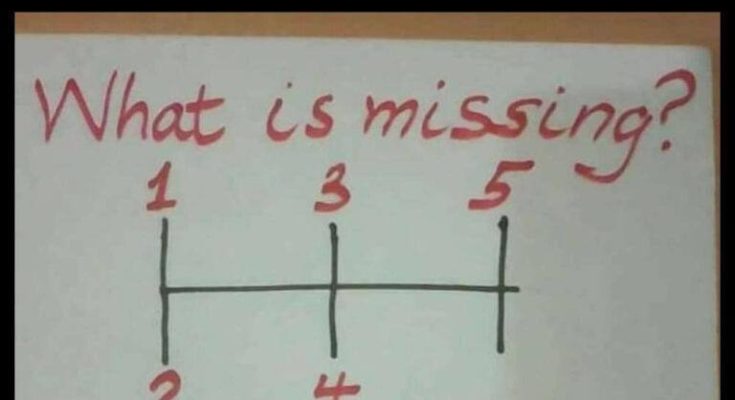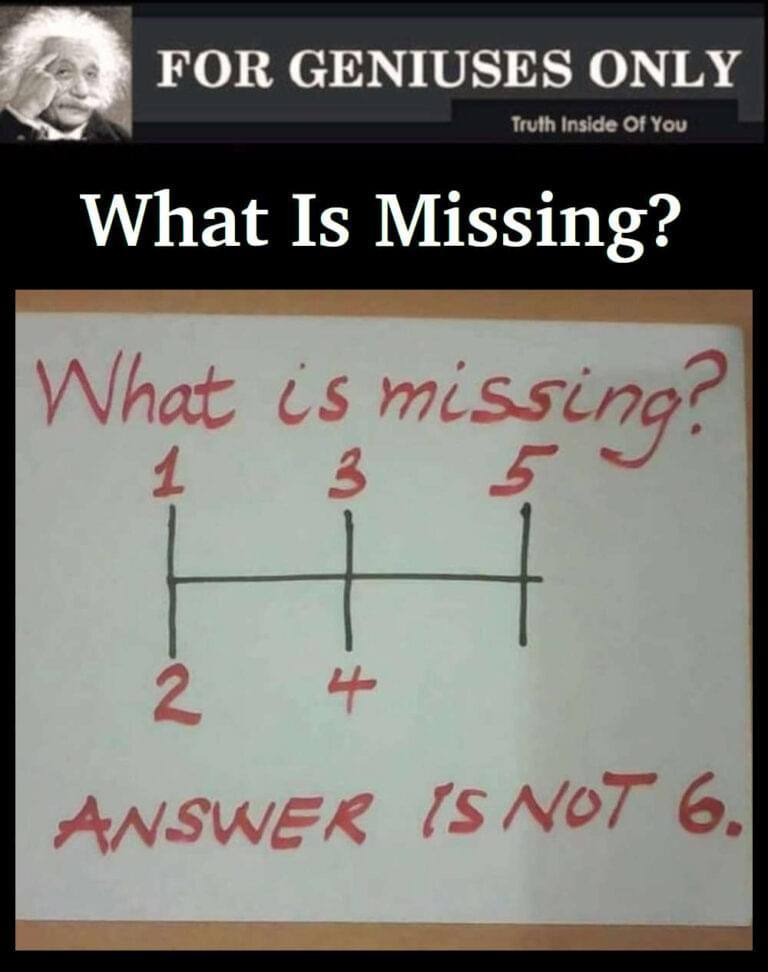Can You Solve This Riddle? Discover the Missing Piece in This Brain-Teasing Puzzle
We all love a good puzzles, don’t we? But did you know that solving riddles is more than just a fun way to pass the time? It’s actually a fantastic way to give your brain a workout! When you dive into solving puzzles, you’re engaging your mind in a way that enhances several cognitive abilities. You’re improving your problem-solving skills, boosting your memory, sharpening your concentration, and enhancing your logical thinking. Riddles push you to think creatively and outside the box, encouraging you to come up with innovative solutions to tricky problems.
The Benefits of Riddles: A Brain and Mood Booster
Puzzles are not just about boosting your cognitive abilities—they’re also great for your emotional well-being. Taking the time to solve a challenging riddle can help reduce stress levels. There’s something incredibly satisfying about that “aha!” moment when you finally crack the answer. This burst of satisfaction can boost your confidence and brighten your mood.
Furthermore, working through a tough puzzle can teach you patience. It’s easy to get frustrated when you’re stumped, but the process encourages you to slow down and think methodically. Plus, it’s an entertaining way to keep your mind active, whether you’re killing time on your commute or just looking for a break from the daily grind. Riddles are an excellent tool for keeping your brain sharp and your mood positive.
Why Regularly Solving Riddles is Great for You
If you make it a habit to challenge yourself with puzzles regularly, you’re not just passing the time—you’re enhancing your cognitive health. Engaging with riddles stimulates brain activity, promoting growth and mental agility. It’s like exercise for your mind, strengthening your mental muscles and keeping your mind agile. This can be particularly beneficial as you age, helping to maintain sharp thinking and quick recall.
But that’s not all. Solving riddles can also help you build emotional resilience. The patience and focus required to solve challenging puzzles can help you stay calm under pressure in other areas of your life. Plus, it fosters a growth mindset, encouraging you to keep trying even when the solution isn’t immediately clear.
Ready to Test Your Skills? Here’s the Riddle
Now that you know the benefits of solving riddles, it’s time to test your skills. Below is a brain-teasing puzzle that will challenge your ability to think logically and spot patterns. Are you ready? Here’s the riddle:
Riddle: What’s Missing?
(Imagine the puzzle graphic here.)
Did you figure it out? Don’t worry if you’re feeling a bit stuck. This puzzle is all about recognizing patterns and understanding what’s missing from a sequence. Let’s break it down together to see if we can solve it.
Unraveling the Mystery: What’s the Missing Piece?
The key to solving this riddle lies in recognizing a common pattern related to manual transmission cars. If you’ve ever driven a stick-shift vehicle, you’ll be familiar with how the gears are arranged. Manual transmissions typically follow a specific sequence, which looks like this:
- R (Reverse)
- 1 (First gear)
- 2 (Second gear)
- 3 (Third gear)
- 4 (Fourth gear)
- 5 (Fifth gear)
These gears are organized in a distinct pattern to make shifting smooth and intuitive. In this riddle, you’re presented with a sequence of gears—but something is missing. The challenge is to figure out which part of the sequence has been left out.
The Solution: It’s All About the “R”
After examining the sequence, the missing piece is revealed to be the “R” for Reverse. While the forward gears (from first to fifth) are all accounted for, the Reverse gear is missing from the lineup. This might seem like a minor detail, but it’s crucial in the context of driving a manual transmission car. Without the Reverse gear, you’d have no way to back up, which would be quite limiting!
The riddle cleverly plays on your familiarity with how manual transmissions work, knowing that most people will focus on the forward gears and overlook the importance of Reverse. But once you see it, the solution is obvious: the missing gear is “R.”
Why This Riddle is So Engaging
What makes this riddle so fascinating is how it challenges your brain to notice what’s not immediately obvious. It’s a great exercise in pattern recognition and lateral thinking. Often, we get so caught up in what’s in front of us that we miss what’s missing. This puzzle reminds us that sometimes, the most important details are hidden in plain sight.
Engaging with puzzles like this is a fantastic way to hone your focus and improve your attention to detail. By training your mind to see beyond the obvious, you’re better prepared to handle complex problems in everyday life. Whether it’s in your work, personal projects, or simply navigating the day-to-day, sharpening your problem-solving skills can pay off in many ways.
Challenge Your Friends and See Who Can Solve It
Now that you’ve cracked the code, why not share the riddle with your friends and family? See if they can spot what’s missing as quickly as you did. You might be surprised by how many people overlook the “R” for Reverse, even though it’s right there in the sequence.
Riddles like this one are not just a great way to entertain yourself—they’re also a fun way to connect with others. Sharing puzzles can spark interesting conversations and even a bit of friendly competition. Plus, it’s a wonderful way to keep everyone’s minds active and engaged.
The Takeaway: Keep Exercising Your Brain
Puzzles like this one are more than just games—they’re tools that keep your brain sharp and your spirits lifted. So, the next time you have a few minutes to spare, why not pick up a riddle and give your mind a workout? Whether you’re at home, on your commute, or just looking for a mental break, solving riddles can be both entertaining and enriching.
Remember, the best solutions are often hidden in plain sight. Sometimes, you just need to shift your perspective to see what’s been there all along. So keep challenging yourself, keep exploring new puzzles, and enjoy the mental benefits that come with solving them.





